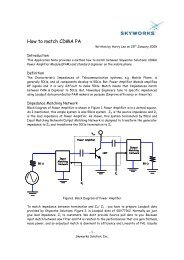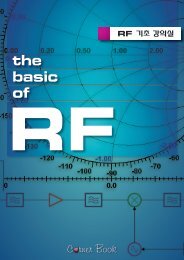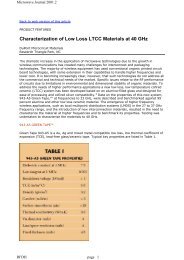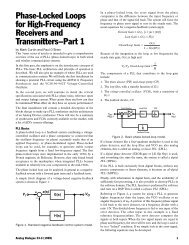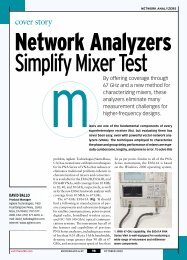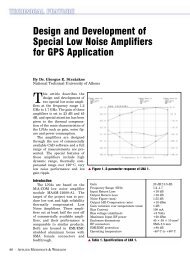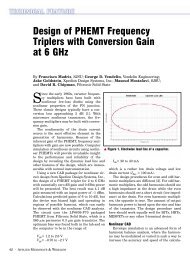Mathcad - ee217projtodonew2.mcd
Mathcad - ee217projtodonew2.mcd
Mathcad - ee217projtodonew2.mcd
You also want an ePaper? Increase the reach of your titles
YUMPU automatically turns print PDFs into web optimized ePapers that Google loves.
To insure stability over the spectrum, resistors were strategically placed throughout the circuit.<br />
The best method to improve low frequency stability is to add a resistance in series with an inductor<br />
connected from the signal path to ground. Similarly, high frequency stability is enhanced with a<br />
resistance in series with a capacitor connected from the signal path to ground. Resistors degrade<br />
the noise and gain performance of the amplifier so it would be desirable to use reactive elements to<br />
improve stability. Unfortunately, although reactances affect the input and impedances of the<br />
amplifer, they have no effects on the unconditionaly stability factor, K around the K=1 point. In this<br />
LNA resistance was intentionally placed in series with the output and input bonding pads to<br />
achieve unconditional stability condition at high frequencies. The simulation results for the K-factor<br />
of the final version of our circuit have been plotted in Fig. 40 and Fig. 41.<br />
Fig. 40: Simulation results for K-factor<br />
Fig. 41: A closer look at K-factor at high frequencies






